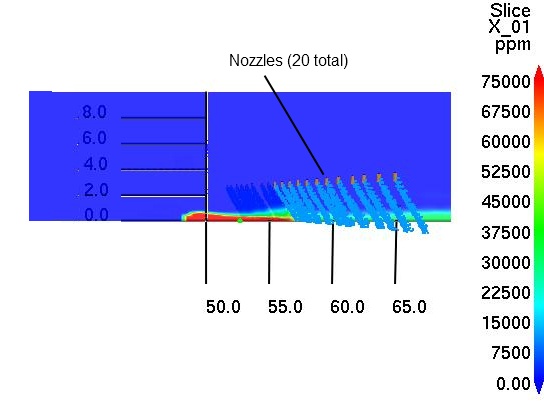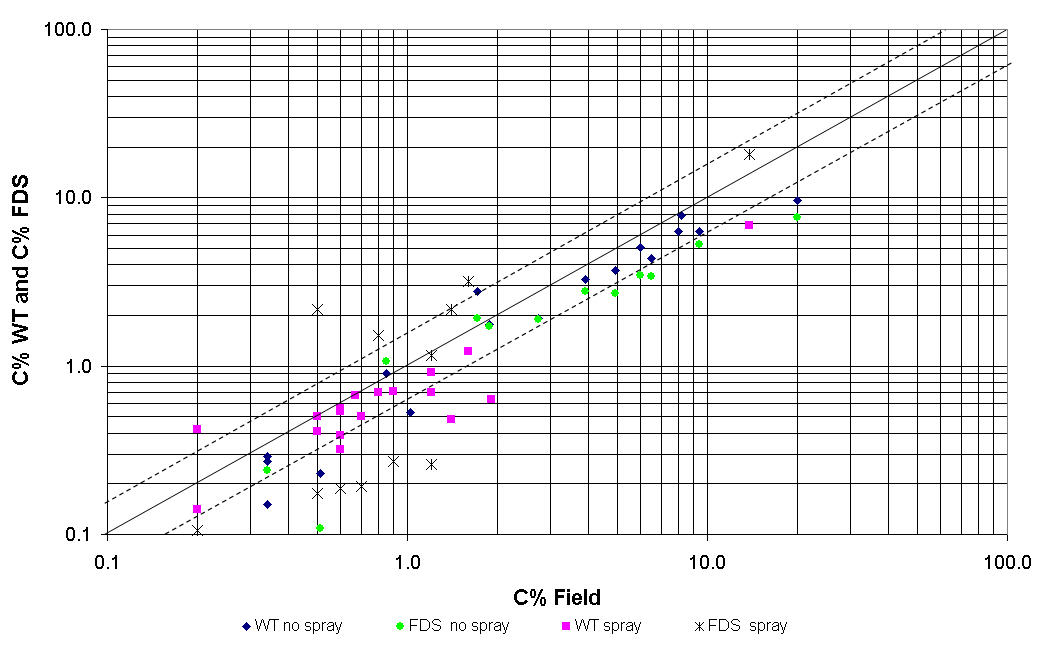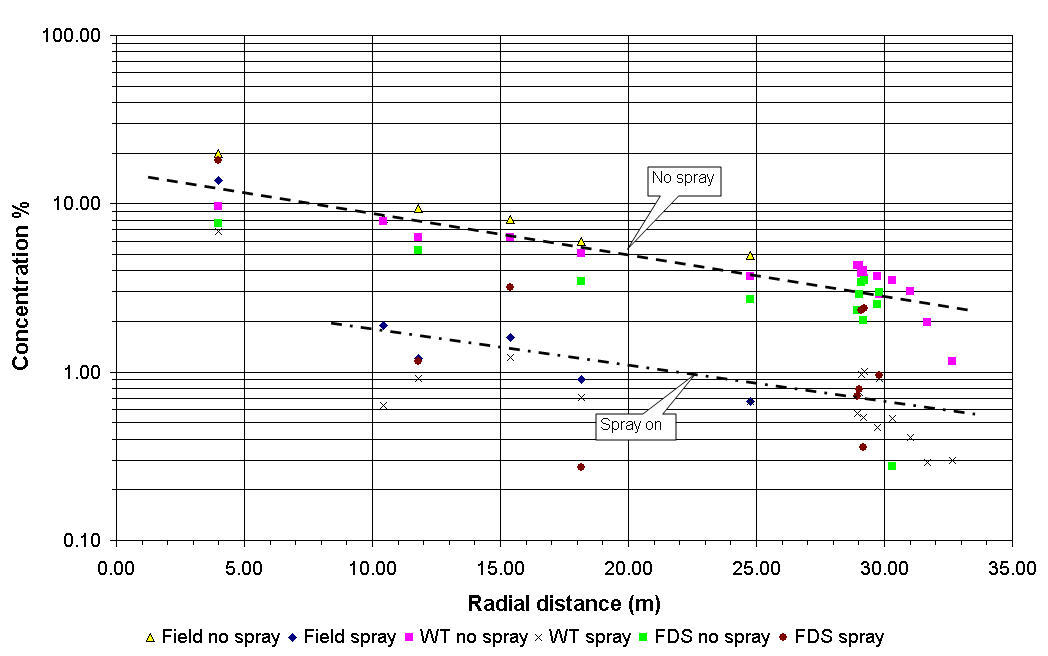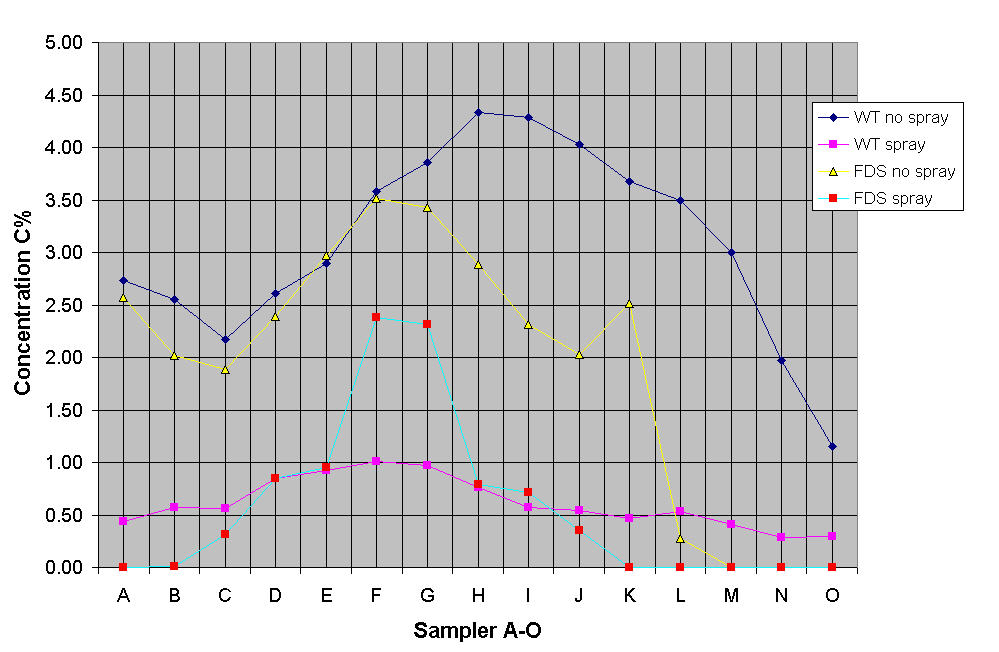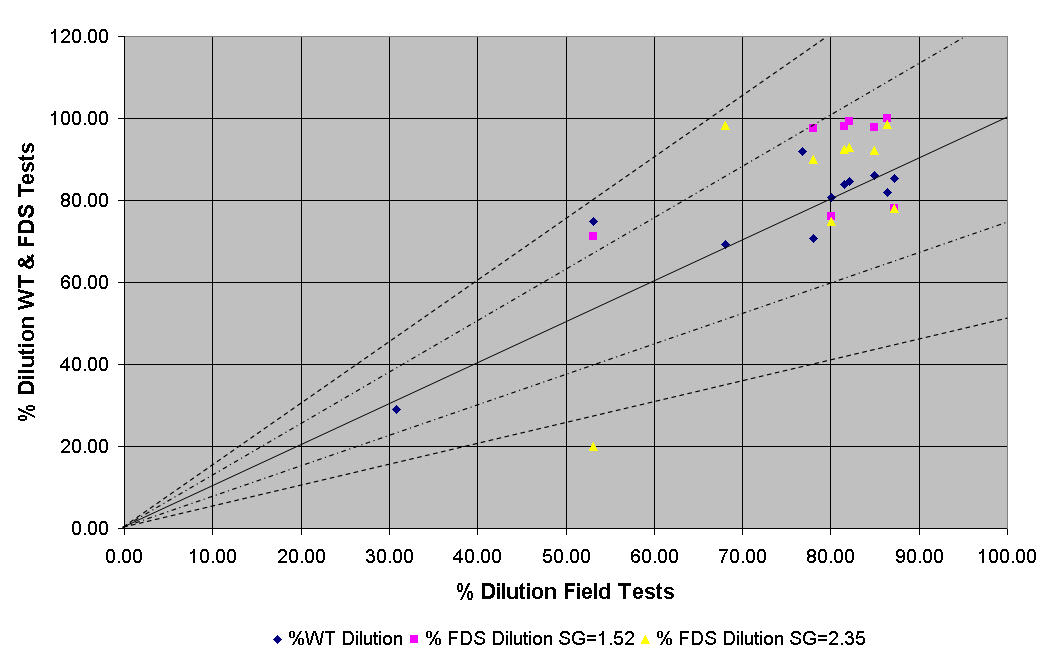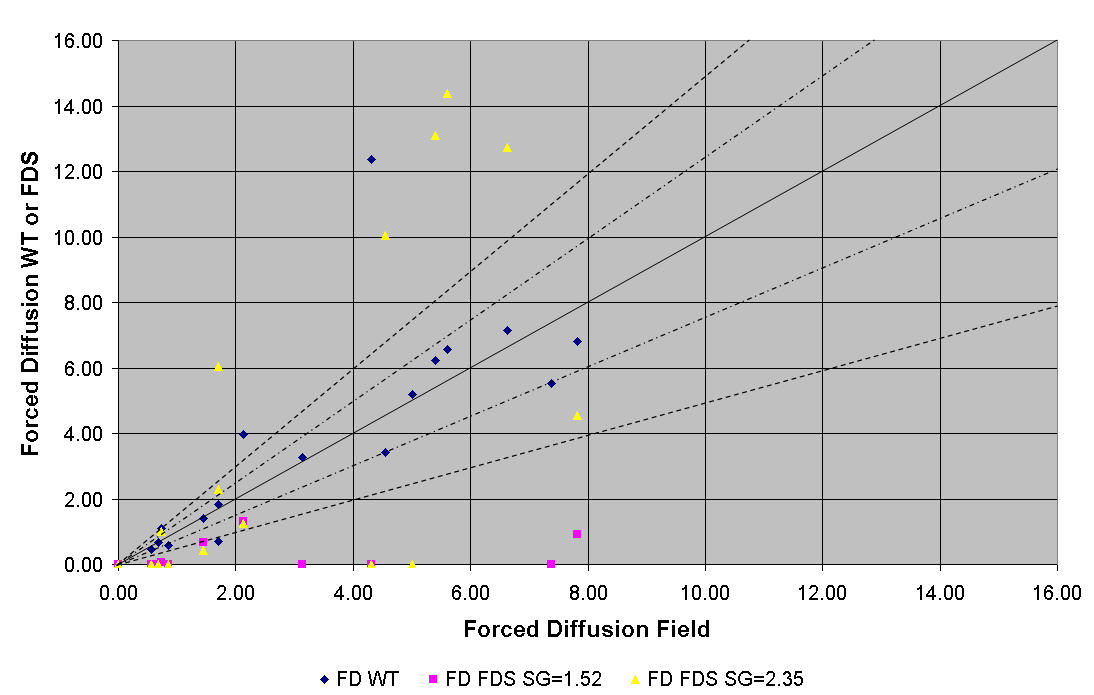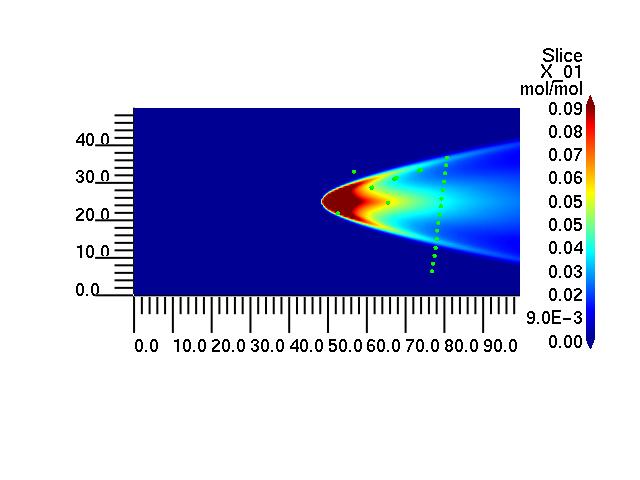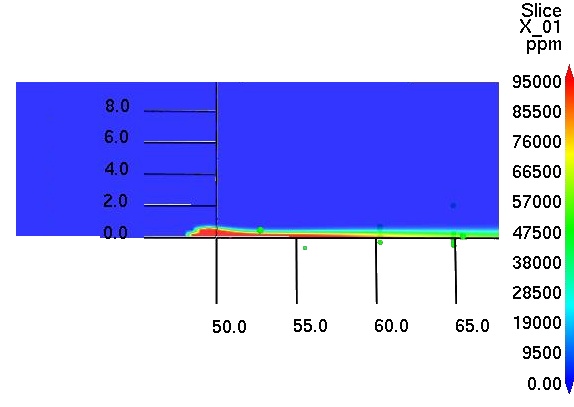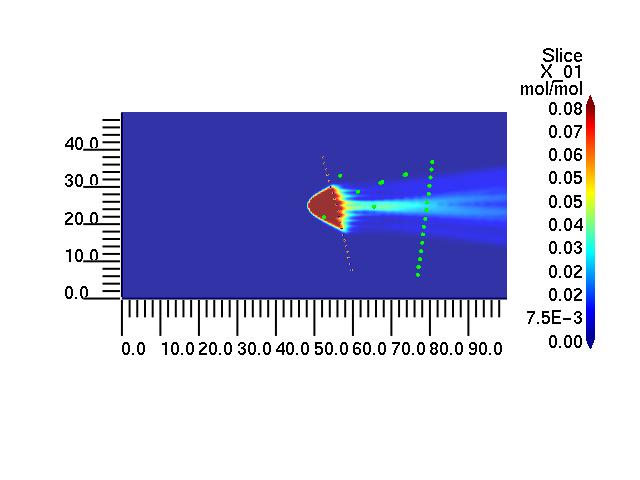Water Spray Interaction with Dense Gas Clouds
Submission by: Robert N. Meroney, PhD. Wind Engineering Software, and Civil and Environmental Engineering, Colorado State University, Fort Collins, CO., USA
Water spray curtains can provide an effective and rapid dilution mechanism for low-lying dense clouds. Frequently such clouds are released as a result of a chemical manufacturing, storage or gas transportation accident.
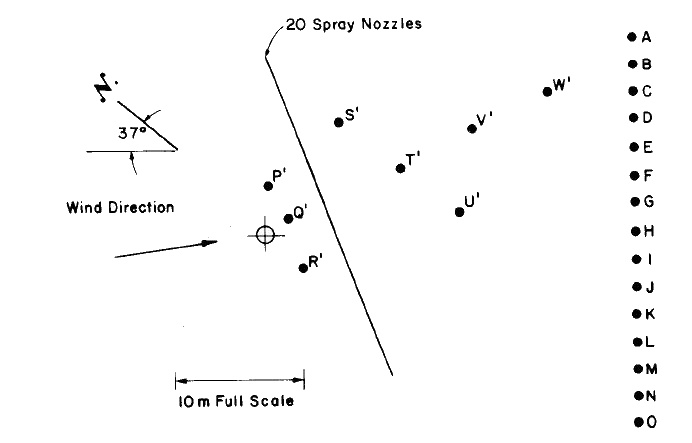
Extensive field and laboratory tests have been performed to determine how well water curtains can mitigate actual spill conditions. Numerical methods are often proposed to provide system design or timely response information, but most of these models reduce mathematical and computational complexity by integrating the equations of motion over volumes, sections or depths which provides computational speed but often sacrifices mixing detail and typically presume the use of empirical entrainment relationships.
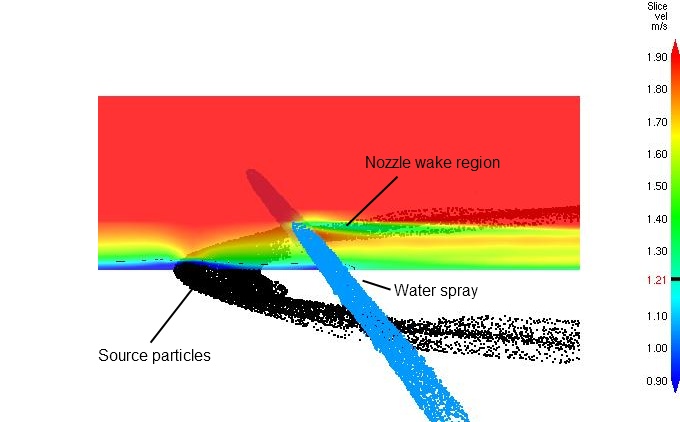
In this study NIST FDS and Pyrosim have been used to reproduce the water-spray/cold carbon dioxide releases performed during a field experiment by the UK Health and Safety Executive (1981). Parallel wind tunnel experiments and box and slab models CFD models are also available. Thus, there is an opportunity to provide side-by-side comparisons of field, wind tunnel, box, slab and FDS CFD modeling methods.
A paper, "CFD modeling of water spray interaction with dense gas plumes" presented at the 13th International Conference of Wind Engineering, Amsterdam, July 2011 contains study details.
Without Spray Curtain
With Spray Curtain
Supplemental Images
